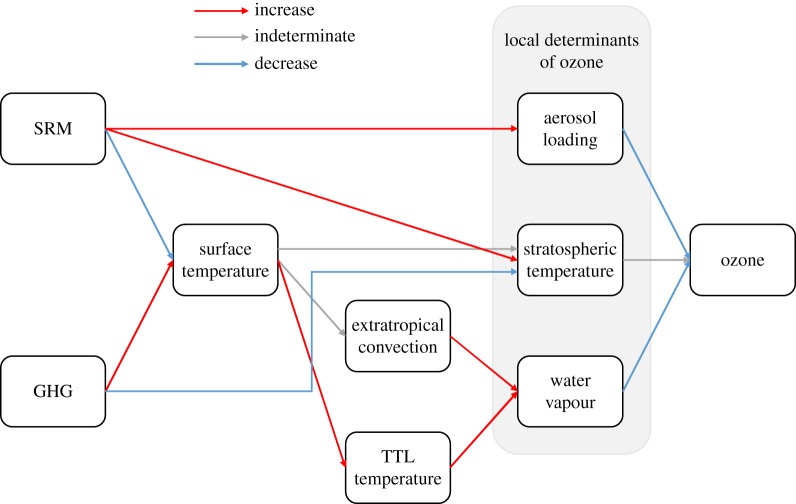Figure 1.
Schematic of interactions between green house gas (GHG)-driven climate change, SRM and stratospheric ozone. A red arrow denotes an interaction where an increase in the quantity on the left generally causes an increase in the quantity on the right; a blue arrow denotes the converse; and a grey arrow is used for indeterminate cases. Sulfate aerosol causes direct radiative heating of the lower stratosphere and perhaps of the tropical tropopause layer (TTL). SRM would introduce a net negative radiative forcing that would offset some impacts of the positive forcing from increased GHGs. The combined effects of increased surface aerosol density, stratospheric temperature decreases and water vapour increases could substantially increase photochemical ozone losses. Conversely, SRM aerosol might decrease stratospheric water vapour, an offsetting effect. The purpose of SCoPEx is to reduce the uncertainty in our knowledge of relevant aerosol processes and this photochemistry through in situ perturbation experiments.

